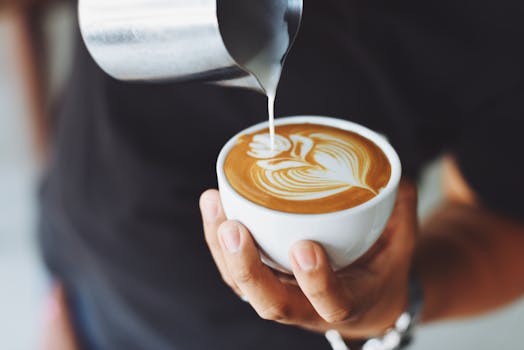Become an Expert in Making Coffee: A Journey Through Extraction Methods, Beans, and Flavors
Coffee is more than just a morning ritual; it is a complex beverage with a rich history and a myriad of flavors waiting to be explored. Becoming an expert in making coffee involves understanding the various extraction methods, the types of beans available, and the flavors that can be achieved. This article will guide you through these essential aspects, helping you elevate your coffee-making skills to new heights.
Understanding Coffee Extraction Methods
Extraction is the process of dissolving the soluble compounds in coffee grounds to create the beverage we love. Different methods of extraction can significantly influence the flavor and aroma of the final cup. Here are some popular extraction methods:
- Espresso: A concentrated coffee brewed by forcing hot water through finely-ground coffee under high pressure. It is the base for many coffee drinks, such as lattes and cappuccinos.
- Pour Over: A manual brewing method where hot water is poured over coffee grounds in a filter. This method allows for greater control over brewing time and water temperature, resulting in a clean and flavorful cup.
- French Press: Coarse coffee grounds are steeped in hot water and then separated by pressing down a metal or plastic plunger through a mesh sieve. This method produces a rich and full-bodied coffee.
- Aeropress: A versatile brewing device that uses air pressure to push hot water through coffee grounds. It can produce espresso-like coffee or a more traditional brew, depending on the technique used.
- Cold Brew: Coarse coffee grounds are steeped in cold water for an extended period (usually 12-24 hours). This method results in a smooth, less acidic coffee that can be served cold or hot.
Each method has its unique characteristics and can produce different flavor profiles. Experimenting with these techniques will help you discover your personal preferences and refine your skills.
Exploring Different Types of Coffee Beans
The type of coffee bean you choose plays a crucial role in the flavor of your brew. There are four main types of coffee beans:
- Arabica: Known for its sweet, soft taste and higher acidity, Arabica beans are the most popular type, accounting for about 60-70% of global coffee production.
- Robusta: These beans have a stronger, more bitter flavor and contain more caffeine than Arabica. They are often used in espresso blends for added body and crema.
- Liberica: A less common variety, Liberica beans have a unique, floral aroma and a somewhat woody flavor. They are primarily grown in West Africa and the Philippines.
- Excelsa: Often used in blends, Excelsa beans have a tart, fruity flavor profile. They are grown mainly in Southeast Asia and contribute complexity to coffee blends.
Understanding the characteristics of each bean type will help you select the right one for your desired flavor profile. For instance, if you prefer a smooth and sweet cup, Arabica is your best bet, while those who enjoy a bolder taste may gravitate towards Robusta.
Flavor Profiles: The Art of Tasting Coffee
Just like wine, coffee has a wide range of flavor profiles that can be influenced by various factors, including the type of bean, the region it is grown in, and the brewing method used. Here are some common flavor notes you might encounter:
- Fruity: Notes of berries, citrus, or stone fruits often found in lighter roasts.
- Nuts and Chocolate: Common in medium roasts, these flavors provide a comforting and familiar taste.
- Spicy: Some coffees exhibit hints of spices like cinnamon or clove, often found in beans from specific regions.
- Floral: Delicate floral notes can be present in high-quality Arabica beans, particularly those grown at high altitudes.
To develop your palate, consider participating in coffee tastings or cuppings, where you can sample various coffees side by side and learn to identify different flavors.
Conclusion: Mastering the Art of Coffee Making
Becoming an expert in making coffee is a rewarding journey that involves understanding extraction methods, exploring different types of beans, and appreciating the diverse flavor profiles available. By experimenting with various brewing techniques and learning about the beans you use, you can create a personalized coffee experience that delights your senses.
As you continue to refine your skills, remember that coffee is not just about the final product; it is also about the process and the joy of discovery. So grab your favorite beans, experiment with different methods, and savor the rich world of coffee that awaits you!
